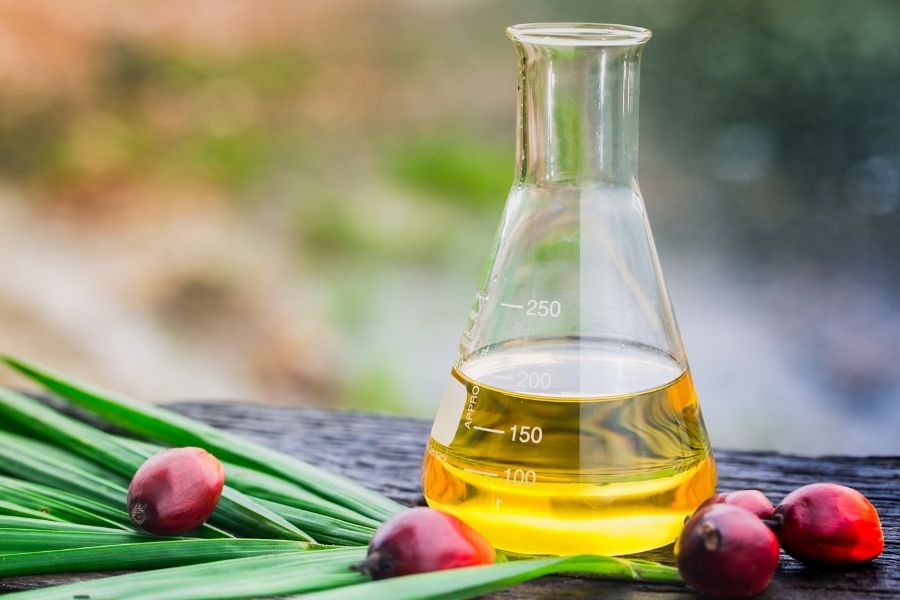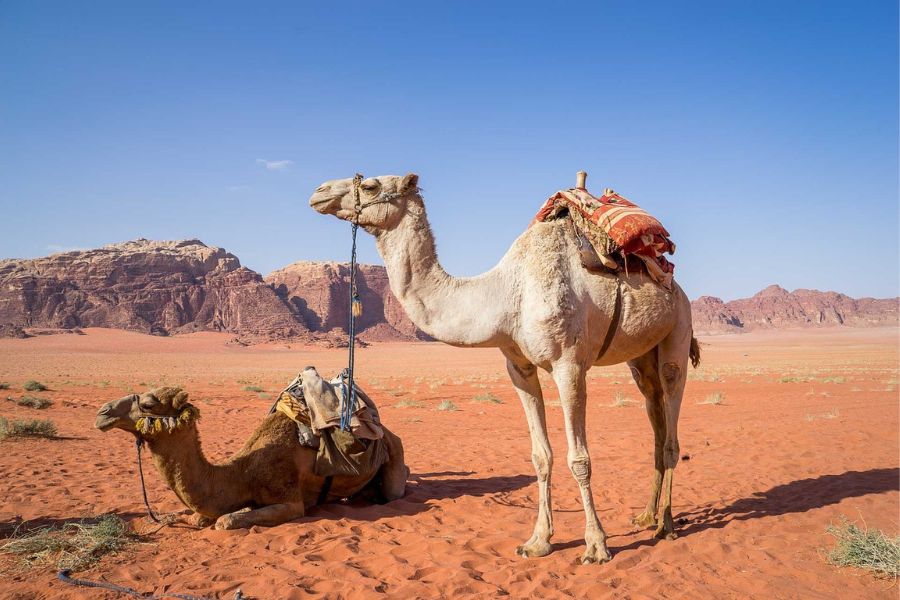Palm oil: Can India be self-reliant and sustainable?
The Union Cabinet has approved a dedicated National Mission on Edible Oils-Oil Palm to make India ‘Aatmanirbhar’ in production of edible oils, including oilseeds and oil palm. But can it achieve this in an environmentally sustainable manner, learning from the experiences of Southeast Asian countries?
- India is the largest importer of palm oil and heavily depends on Malaysia and Indonesia for its annual needs, despite its equatorial proximity and humid tropical climate, perfect for oil palm cultivation.
- Cultivation and economic constraints of palm oil has historically dissuaded local farmers from venturing into oil palm.
- However, even with this ‘aatmanirbhar’ push, India is estimated to continue importing large quantities of palm oil in the coming years.
- At the same time, domestic cultivation also carries a huge environmental cost as can be seen by palm oil production in South-East Asia which has wiped out entire rainforests.

Source: Shutterstock
Palm oil is an essential, cheap and versatile resource for daily consumer needs, widely used in cooking and manufacturing of food products like margarine, chocolates, ice-creams, snacks, packaged and fast food, as well as cosmetic products, detergents, soaps, grease, ink, etc. Given the rising prices of fossil fuels, palm oil is also considered as a critical fuel alternative, used as raw material for palm oil-based biodiesel.
India is the largest importer of edible oil and heavily depends on Malaysia and Indonesia (for palm oil), Argentina and Brazil (for crude soft oil, including soyabean oil), and Ukraine and Russia (for sunflower oil) to meet more than 60% of its annual need. A bulk of India’s edible oil imports comprises palm oil (crude and refined) that account for 55-60% of incoming oil shipments into India. This is projected to reach 20 million tonnes by 2030, given India’s increasing disposable income and shifting food habits.
However, considering India’s high import dependency on palm oil and the continual upward trend in edible oils’ retail prices, the Union Cabinet has pushed for urgent augmentation of domestic palm oil production in August 2021, and has approved a dedicated National Mission on Edible Oils-Oil Palm (NMEO-OP) to make India ‘Aatmanirbhar’ in production of edible oils, including oilseeds and oil palm. Yet, India is estimated to continue importing large quantities of palm oil in the coming years.
Understanding the demand-supply gap
Oil palm grows in humid tropical conditions, 8-10 degrees north or south of the equator. While originally cultivated in West Africa, the oil palm tree found a new home in South-East Asia. In fact, the largest global producers of palm oil today are Indonesia and Malaysia, which produce 85-90% of total vegetable oil in the world, followed by Thailand, and Latin American and African countries like Columbia, Nigeria, Ecuador, etc.
Then, despite its equatorial proximity and humid tropical climate, why is India so highly dependent on Indonesia and Malaysia for its palm oil needs?
As of July 2021, CARE Ratings surmises that India’s present domestic levels of edible oil production are not sufficient to meet the country’s demand. An expanding urban population, coupled with changes in consumption patterns and domestic manufacture trends, which have failed to keep up with demand, are all major contributors to India’s ever-increasing import of edible oils. Currently, India barely produces only around 1.5% of its palm oil demand while importing more than 9 million tonnes annually. This heavy import dependence also affects food inflation, thereby increasing retail prices of a variety of final food products.
The Government of India and industry experts both agree that cultivation and economic constraints of palm oil production have historically dissuaded local farmers from venturing into oil palm: Oil palm has a long gestation period, which restricts income flow for at least 4-5 years; Indian farmers typically have small holdings with limited resources while palm oil cultivation requires large areas and interventions; fluctuation of international prices of CPO; erratic monsoon and irrigation shortages; competition from economically viable crops like rubber, sugarcane, coconut, banana, etc.; and variations in the government charges, duties, etc.
Thus, as India relies heavily on Indonesian and Malaysian imports, domestic prices of edible oils, including palm oil, are driven primarily by movement in international prices. In terms of finances, India imported CPO of Rs 41,993 crores and 739 crore kg at an average cost of Rs 57 per kg in FY21.
The overall imports of palm oil had however reduced in oil year 2019-20 by 23%, given the decline in institutional demand from bulk users on account of the COVID-19 outbreak and resulting restrictions within the country.
Palm oil imports of India (in ‘000 tonnes)
| Oil year (Nov-Oct) | CPO |
CPKO
|
RBD Palmolein | Total palm oil imports |
| 2018-19 | 6,534 | 144 | 2,731 | 9,409 |
| 2019-20 | 6,666 | 130 | 421 | 7,217 |
| 2020-21* | 4,441 | 94 | 26 | 4,561 |
Source: Solvent Extractors’ Association of India (SEA); *2020-21 data is for November 2020 to May 2021; Note: CPKO-Crude Palm Kernel Oil, RBD-Refined, Bleached and Deodorized
But in March 2021, palm oil imports rose by 56.50% or 5,26,463 tonnes, and crude palm oil imports rose to 5,06,633 tonnes, as imports of other alternatives were discouraged due to high prices. However, since March 2021, by virtue of the multi-year highs in palm oil prices, Reuters reports that India’s July 2021 imports plunged by 43% from a year earlier, lowest in 5 months, to 465,606 tonnes. But this is again expected to jump as GoI lifts lockdown restrictions, and in fact reach over 700,000 tonnes in August 2021 after an import duty cut by GoI.
GoI’s ‘Aatmanirbhar’ push for palm oil
Since 1991-92, successive governments have made many efforts to push oilseeds and oil palm products, which have since increased to 275 lakh tonnes in 2014-15 and 365.65 lakh tonnes in 2020-21, but fall short of the country’s annual demand by a long way. Presently, only about 3.70 lakh hectares of land is under oil palm cultivation. Considering India’s potential for oil palm cultivation (which is famed as the highest per acre yielding perennial crop) and that 98% of CPO is still imported, a scheme (which will subsume the National Food Security Mission-Oil Palm) has been proposed to further increase the cultivable area and production of CPO in India.
On August 18, 2021, PM Narendra Modi, presiding over the Union Cabinet, approved NMEO-OP as a Centrally Sponsored Scheme to push domestic production of edible oils, including oilseeds and oil palm, focused on the North-East and Andaman & Nicobar Islands, and make India ‘aatmanirbhar’ in edible oil production.
Under this mission, a financial outlay of Rs. 11,040 crores has been earmarked, out which GoI is to contribute Rs. 8,444 crores and the State Government’s share is Rs. 2,196 crores, including the viability gap funding as well. The mission proposes to add 6.5 lakh hectares of cultivable land for oil palm by 2025-26, with the ultimate target of up to 10 lakh hectares. GoI is optimistic that this would help drive production of CPO to 11.20 lakh tonnes by 20125-26 and up to 28 lakh tonnes by 2029-30.
The scheme will further offer cultivators a fixed price on the lines of the minimum support price (MSP), and as assurance to farmers facing market volatility, farmers will be paid the price difference for their produce via direct benefit transfer (DBT).
There would also be larger focus on assistance of inputs and interventions, like maintenance and inter-cropping. To address shortage of resources and planting material rampant amongst local farmers, GoI will also invest substantially in provisioning of seeds and planting material, half-moon terrace cultivation, bio-fencing and land clearance along with integrated farming. The scheme is expected to benefit oil palm farmers, increase capital investment, create employment, and ultimately reduce import dependence and increase income of farmers.
Sustainable palm oil – responsible business practices & lessons from the West
On this journey to self-reliance, however, India also needs to ensure due focus on self-sustainability. As seen in Southeast Asia, palm oil cultivation carries a huge environmental cost and has in fact wiped out entire rainforests in the region. In fact, increasing growth in global demand for palm oil has triggered significant global concern as oil palm plantations deteriorate the environment where they are developed, resulting in complex environmental impacts in the producer nations. It also presents socio-economic challenges for (at times even results in deterioration of living standards or worse, displacement of) indigenous and native communities.
Palm oil plantations in Malaysia and Indonesia have been heavily criticized as key drivers of deforestation and biodiversity loss in those countries. From Indonesia’s (the largest producer and exporter of palm oil) experience, it’s evident that the domestic palm oil industry has benefitted its rural economy in terms of improving household welfare and local infrastructure.
But at the same time, rising global demand for palm oil from Indonesia has been the primary cause for massive environmental and socio-economic concerns related to land-use change associated with expanding oil palm plantations in producer nations (similar to the goals envisaged by GoI’s NMEO-OP). Such land-use change is shown to alarmingly increase deforestation, biodiversity loss, forest fires, air pollution, carbon emissions, water abstraction, land conflicts, fires in oil palm areas, leading to considerable deterioration in public health and living standards in surrounding/neighbouring areas.
Sustainable palm oil refers to palm oil produced in consideration of various environmental and social issues such as deforestation, water and community rights. To curb palm oil’s harmful effects on the environment and proximate communities, experts are increasingly pushing for consuming countries to demand certified ‘sustainable’ palm oil from producer countries, thereby ensuring a sustainable supply chain as a producer country itself.
Several certification schemes for sustainable palm oil exist, of which the most widely used is that of the international Roundtable on Sustainable Palm Oil (RSPO). To be RSPO-certified, palm oil must not come from land that has been cleared by fire or by destroying primary forests.
In the European Union (EU), increased consumer awareness and government policies have led to a revision of its biofuels policy, aiming to phase out palm oil-based biodiesel by 2030. Several European countries (including France, Germany, Italy and Norway), as well as numerous multinational companies, have already committed to only buying sustainably produced palm oil. In 2016, 69% of EU palm oil imports were RSPO-certified. At present, there is no EU-level requirement for sustainability, but this could change soon; as part of its ‘Green Deal’, the EU is planning an impact assessment of regulatory and non-regulatory options to promote deforestation-free imports of commodities such as palm oil. If such efforts can be replicated in India and other Asian producer nations, it will go a long way to preserving rainforests in South and South-East Asia.
At the SEA’s annual meeting in India in 2017, the Indian Palm Oil Sustainability (IPOS) Framework was launched, aiming to improve sustainability practices of the supply chain. Subsequently, in 2018, the Sustainable Palm Oil Coalition for India (India-SPOC) was launched by WWF India, the RSPO, the Centre for Responsible Business (CRB), and the Rainforest Alliance (RA). Further, Indian companies or international companies, operating in India, have made commitments towards a sustainable supply chain of palm oil.
It is nevertheless pertinent and paramount for India to take a page from the EU and other European economies to make India ‘aatmanirbhar’ indeed in palm oil, but through a sustainable supply chain that keeps our forests and indigenous communities out of harm’s way.













For palm oil production need large track of land which India does not have. Best will be lease land in Africa and produce or take over already existing palm oil farms.